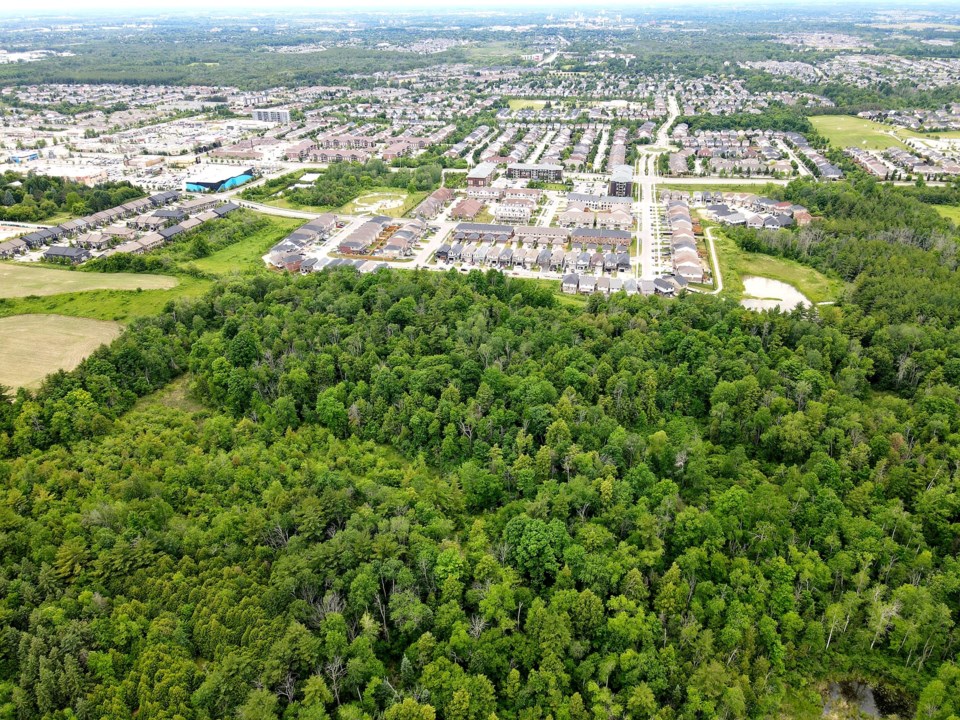Eight weeks of scheduled appeal hearings about the city’s plan to grow the south end are no longer needed, thanks to the Ontario Land Tribunal’s (OLT) endorsement of a settlement agreement.
With the settlement approved, the Clair-Maltby Secondary Plan is now officially in effect, but don’t expect shovels to hit the ground just yet.
“They have to come through for individual zoning and draft plans of subdivision, which will go to council (for consideration),” said Krista Walkey, the city’s general manager of planning and development, noting those plans require a variety of studies to be done, including environmental assessments, along with the installation of infrastructure to serve that community.
“We’re kind of at the beginning of the process before we see a building permit (issued), but we could see building permits as early as 2026.”
Much of that agreement revolves around the designation of protected natural areas, with a series of removals and additions made to the Clair-Maltby Secondary Plan.
Those protected areas cannot be built upon.
“There weren’t a lot of wholesale changes. Generally, the land-use plan … is in keeping with what originally went to council, with a few modifications,” explained Walkey. “The (natural heritage) system was pretty clear and the policies and the documents supported that.”
In some cases, she noted, the changes made don’t increase the quantity of land protected from development, but rather remove them from being included in multiple designations, each of which offered individual protection.
City council approved the Clair-Maltby Secondary Plan in May of 2021. That decision saw 10 appeals filed with the OLT, most of which were from developers that own properties covered by the plan.
The appeal hearing was initially planned to take eight weeks and was to begin this past January, but an agreement was reached through an OLT-led mediation process. City council also approved a series of amendments along the way, with the most recent endorsed this past month.
The 414-hectare parcel of land at the city's southern border is slated to become predominantly residential lands, with a variety of recreational and retail/service commercial uses, along with a preserved natural heritage system including numerous parks and trails.
It’s expected to become home for about 16,000 new city residents as the area is built out.
High-density and mixed use development is to be focused along Gordon Street, down to Maltby Road, with medium and low density as development moves away from Gordon.
The plan sets regulations regarding residential density, building heights, floor space, housing types, road requirements and transportation plans, among other things.
The Township of Puslinch also appealed the Clair-Maltby Secondary Plan, raising concerns about a perceived a lack of commitment to implementing long-term water monitoring and protecting township resident’s water source, wording around minimum set back and landscape requirements in the urban-rural transition area, and unacknowledge planning submissions to the city.
The Clair-Maltby area used to be part of Puslinch, but among the lands annexed by the City of Guelph in 1993.
